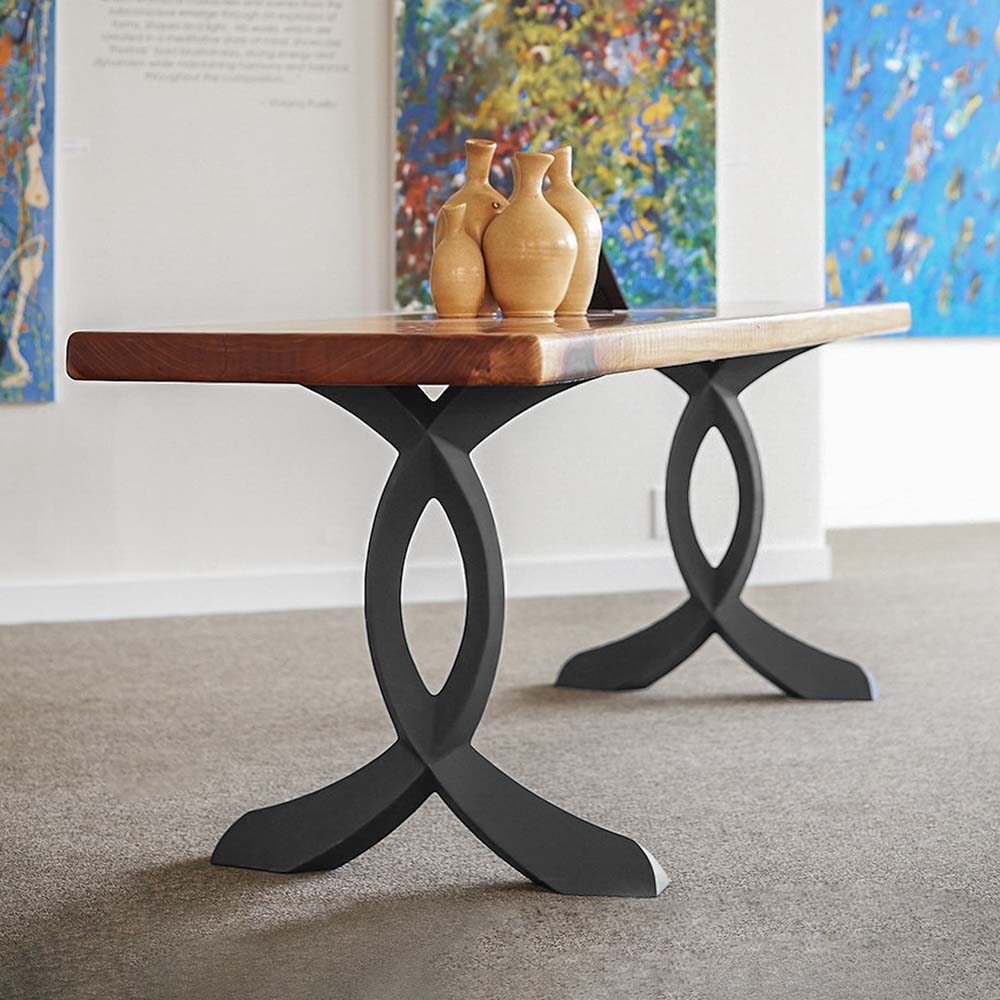Upgrade Your Furniture with Trendy Dining Room Table Legs
Upgrade Your Furniture with Trendy Dining Room Table Legs
Blog Article
Table Legs: Just How to Select the very best Designs for Your Area
Choosing the ideal dining table legs is important for both aesthetic and functional consistency in your eating area. Whether your room flaunts a streamlined, contemporary ambiance or leans in the direction of a much more conventional ambiance, the design of the legs can dramatically influence the overall appearance. Conical legs radiate contemporary beauty, while turned legs supply a nod to traditional charm. Past style, the material-- be it cozy wood or streamlined steel-- plays an essential function in establishing the tone. However how do you ensure these aspects complement your existing style while supplying the required security? The response hinges on a balanced strategy.
Examining Your Dining-room Design
Exactly how do you establish the most effective table legs for your space? The solution begins with a comprehensive evaluation of your dining-room style. A natural design guarantees that your table legs improve the general visual as opposed to encounter existing components. Beginning by observing the building attributes of your eating space. Exist famous features such as revealed light beams, detailed moldings, or minimal lines? These information usually determine whether a traditional, rustic, modern, or industrial style is most suitable.
An eating space with streamlined, modern-day chairs and metal accents might profit from basic, structured table legs. Alternatively, a room filled with vintage items and abundant textiles could call for ornate, sculpted legs.
Big, open dining spaces can suit heavier, much more substantial legs, whereas smaller areas call for more delicate, unobtrusive styles. By meticulously evaluating these elements, you can select eating table legs that sympathetically blend with your eating area's design.
Popular Leg Styles Explained

One common design is the tapered leg, renowned for its streamlined, contemporary appearance. This leg narrows from leading to bottom, supplying a minimalist allure appropriate for modern and Scandinavian interiors. Next off, the turned leg attributes elaborate spindle-like layouts, typically found in standard and farmhouse settings. These legs add a touch of workmanship and beauty.
Cabriole legs, with their unique contours, are synonymous with French Provincial and Queen Anne furnishings. Their elegant, flowing lines bring a sense of refinement and historical charm (dining room table legs). For those favoring a durable and uncomplicated design, square legs offer tough assistance and a tidy, geometric appearance, suitable for commercial or minimal rooms
Lastly, hairpin legs provide a retro, mid-century modern-day ambiance. Made from steel, these legs are both light-weight and strong, adding a distinct aesthetic contrast to wooden tabletops. Comprehending these designs will certainly lead you in selecting table legs that enhance Bonuses your space's aesthetic and capability.
Material Factors To Consider

Wood is a traditional option, understood for its heat and flexibility. It can be found in different varieties such as oak, walnut, and maple, each offering unique grain patterns and shades. Steel legs, typically made from stainless steel, iron, or light weight aluminum, provide a contemporary and commercial look while guaranteeing durable support. They are usually extra resistant to deterioration, making them a sturdy choice.

Various other products like bamboo or rattan use eco-friendly alternatives, bringing a natural and loosened up ambiance to the dining location. Each material has its benefits and drawbacks, and the finest option will certainly depend on your particular needs and choices.
Balancing Appearances and Functionality
Attaining the perfect equilibrium in between appearances and functionality is crucial when selecting table legs. While the aesthetic charm of table legs can considerably improve the total ambiance of a dining space, their useful facets can not be overlooked. The design of the legs need to harmonize with the area's design, yet they must additionally provide sufficient assistance and security for the table.
Consider the building layout of your area. Streamlined, contemporary interiors may take advantage of minimal, steel legs that offer a clean and inconspicuous appearance. On the various other hand, conventional setups commonly match transformed or sculpted wood legs that include a touch of beauty and elegance.
Functionality incorporates the stability and sturdiness of the legs. For instance, trestle legs, understood for their effectiveness, can supply strong assistance for bigger tables, making them ideal for family members or regular artists. dining room table legs. Conversely, pedestal legs can provide more legroom and flexibility, allowing for much better seating setups
Additionally, the elevation and positioning of the legs are critical for comfortable eating. Legs positioned too much internal may restrain seating, while those too near to the side can limit motion. Hence, thoughtful factor to consider of both visual and practical components is vital for an optimum eating experience.
Customization and DIY Options
Customization opens a world of possibilities for creating dining table legs that are distinctively tailored to your taste and demands. Particular style aspects, such as turned legs, tapered forms, or intricate makings, can be incorporated to show your style.
For those likely in the direction of do-it-yourself (DO IT YOURSELF) projects, creating custom eating table legs provides both a satisfying experience check this and the possibility to accomplish a bespoke aesthetic. Do it yourself lovers can resource resources and make use of woodworking or metalworking tools to craft legs that satisfy exact specifications. Furthermore, various on the internet tutorials and workshops supply assistance, making the procedure extra easily accessible for novices.
Eventually, whether opting for professional personalization or embarking on a DIY endeavor, the capability to customize table legs makes certain that the end product integrates with your interior decoration vision, enhancing both capability and visual allure.
Conclusion
Picking the appropriate eating table legs needs mindful factor to consider of the overall style of the eating room, consisting of existing architectural functions and furnishings. Eventually, the selected table legs need to enhance the content decor, supplying both visual appeal and practical support.
Report this page